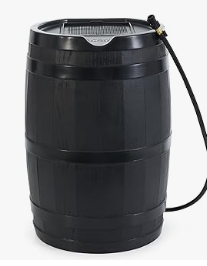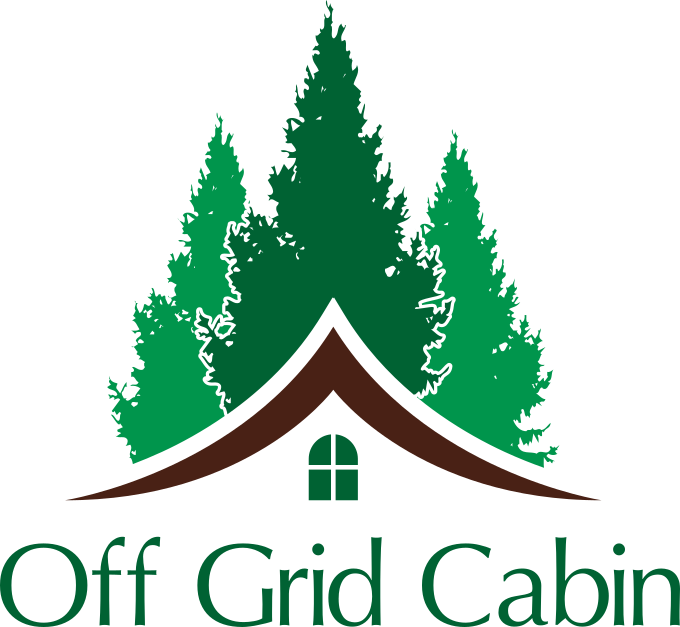🌧️ Rain Barrel Starter Kit for Safe Everyday Use
1. The Barrel

- Food-grade container (55-gallon plastic barrel works well).
- Opaque or painted dark to block sunlight (prevents algae).
- Tight-fitting lid with a fine mesh screen where water enters (keeps out leaves, bugs, and mosquitoes).
2. The Collection Setup
- Downspout diverter kit (connects your gutter to the barrel, and can shut off flow when full).
- First-flush diverter (optional, but highly recommended—it lets the first few gallons of roof runoff, which may contain dust, pollen, or bird droppings, bypass the barrel).
3. Storage & Maintenance Basics
- Barrel should sit on a stand or blocks for easy gravity flow.
- Drain or use water frequently so it doesn’t stagnate.
- Once a month: rinse the barrel with a vinegar-water mix or mild bleach solution (1 tablespoon bleach per gallon of rinse water, then flush well).
4. Filtration & Purification Options
- Inline Sediment Filter: A simple pre-filter that connects to your hose outlet.
- Carbon Filter or Gravity Filter: Removes odors, chemicals, and improves taste (brands like Berkey, Sawyer, or DIY ceramic filters work well).
- For Drinking Water: Boiling or a UV purifier is an extra safety step.
5. Accessories
- Spigot near the bottom for filling watering cans or attaching a hose.
- Overflow outlet so excess water diverts away from your foundation.
- Optional inline pump if you want pressure for garden hoses.
🛠️ Step-by-Step Setup
- Prep your barrel: Wash it thoroughly, add lid and spigot.
- Install the downspout diverter: Connect your gutter so rain flows directly into the barrel.
- Add a first-flush diverter (if possible): This reduces roof debris entering the system.
- Screen it off: Make sure every entry point has a fine mesh screen.
- Raise the barrel: Place it on sturdy blocks for easier access and gravity-fed flow.
- Use and rotate water often: Don’t let it sit too long; fresh water is safer.
- Filter before use: Run collected water through a carbon or ceramic filter before using it for cooking, cleaning, or drinking.
👉 For everyday household use, you’ll want both good storage AND basic filtration. Think of it like a two-layer shield: storage keeps the water clean, and filtration makes sure it’s safe.
DIY Rain Barrel Parts Kit (Amazon)
🌧️ Rainwater Use & Treatment Guide
Water UseStorage Only (clean barrel + screen)Basic Filtration (sediment + carbon filter)Advanced Purification (boiling, UV, ceramic, or high-end filter)Gardening / Plants✅ Safe – storage alone is fine✅ Even better if filtered for clog-free hosesNot necessaryOutdoor Cleaning✅ Safe for washing tools, patios, cars✅ Improves clarity (less grit/odor)Not necessaryFlushing Toilets✅ Safe with clean storage✅ Better if filtered (prevents buildup)Not necessaryLaundry (non-delicate)⚠️ Possible, but may stain if dirty✅ Much better – removes particles/odorsNot necessaryShowering / Hand Washing⚠️ Risky (bacteria possible)⚠️ Safer but still not recommended without final step✅ Recommended – purification makes it safe for skin contactCooking / Drinking❌ Not safe❌ Not safe – filtration alone isn’t enough✅ Required – advanced purification needed for potable use
👉 Key Takeaway:
- Plants, outdoor cleaning, toilets → storage alone is enough.
- Laundry & non-drinking household use → add basic filtration.
- Drinking & cooking → always use advanced purification.
Harvesting Rain Water
© 2025, Teresa. All rights reserved.

